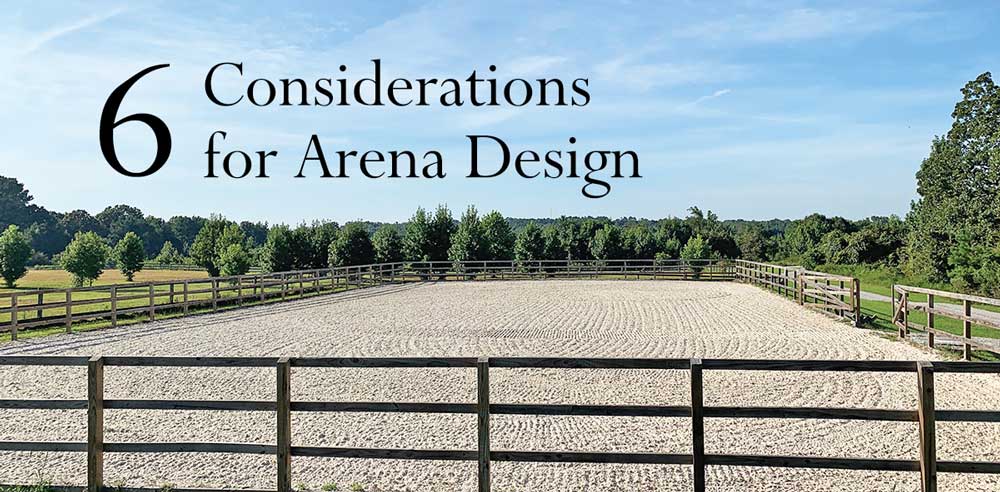
Building your dream arena is possible with a good plan.
Building a riding arena represents a significant financial investment for any equine facility, but with careful planning and installation, it is likely to become one of the farm’s most important assets. A successful arena plan should consider six critical variables—riding discipline, size, placement, drainage, base and footing—and incorporate your program’s specific needs. Carefully assessing your situation and consulting with an expert from Premier Equestrian will help ensure that the horse arena design meets the unique needs of both your program and your budget. Here’s our top tips on how to make an arena.
Your Discipline
The first variable in arena design is determining the type of rider you are building for. The needs of a pleasure rider vary greatly from those of a high performance dressage rider or elite jumper. Knowing the type of horse and rider that will be using the arena– and understanding their different demands– is an important step in choosing the best match in each of the remaining categories.
“Not every arena is suitable for every single discipline,” says Mark Neihart, Premier Equestrian CEO and co-founder. “The surface interacts differently with different disciplines.”
Dressage horses require grip and stability in their surface, while jumping horses need an arena that is firm enough to push off of yet cushioned enough to absorb the impact of landing. Horses in speed disciplines such as reining need footing that is loose enough to allow them to slide. Clearly, knowing exactly who and what you are designing for is critical before making any other decisions.

Dressage Arena Footing
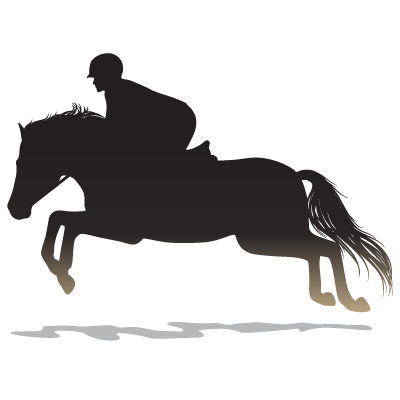
Jumping Arena Footing
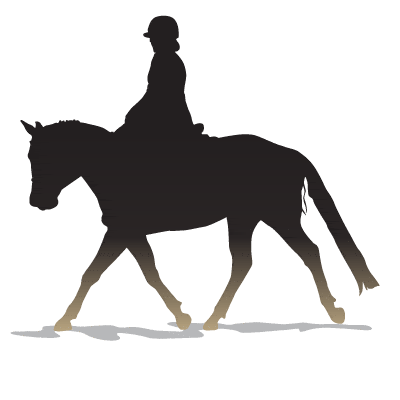
Multi-Discipline Footing
What Size Should My Riding Arena Be?
When it comes to horse arena size, one size does not fit all. Again, consider the discipline you are designing for, the number of horses that will use the arena at once, and the amount of space available at your facility to dedicate for riding use to determine your desired riding arena size.
Generally speaking, dressage arenas are smaller than those designed for jumping. A competition sized standard dressage arena is 20 meters by 60 meters (12,915 square feet) while a jumping arena may need to be 100’ by 200’ (20,000 square feet) to accommodate a full course. Remember when designing a dressage arena, you may need to plan for a warmup track around the outside of the 20×60 or 20×40 meter area.
Where Should I Build My Arena?
Perhaps one of the most critical variables to consider is the placement of the riding arena on your property. Some variables that will influence your decision include accessibility (to barns, to water, to electricity) and proximity to high traffic areas. But from an arena designer’s perspective, the ideal location not only meets all of the needs listed above, but it is also already somewhat flat.
The topography of your land will determine how much cutting or filling an excavator must do to prepare the site for your arena—and this preparation can become a major line item in the budget if significant site work is required. That’s not to say it is impossible to create a flat space out of an existing hill; it just means that a larger percentage of the budget will be absorbed here than if the chosen location were already flat.
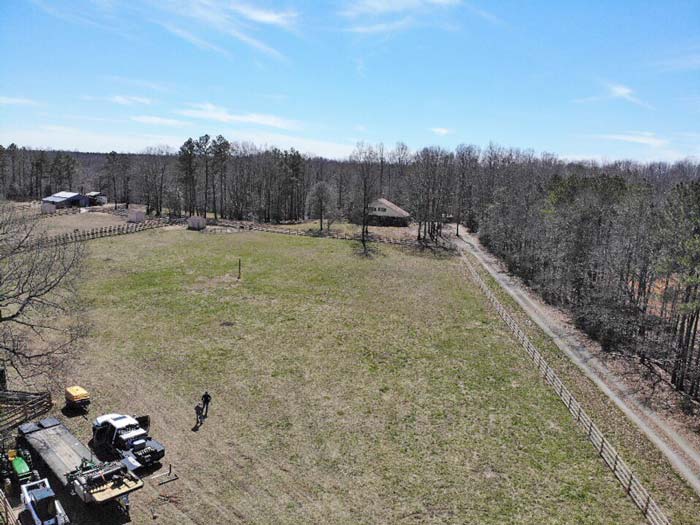

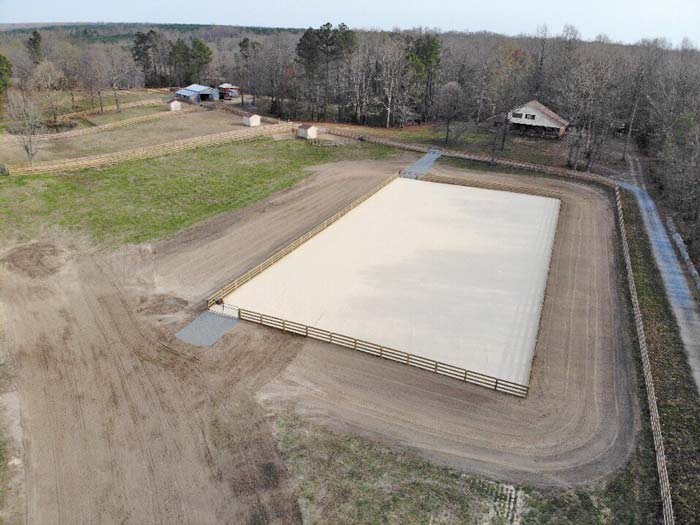
Water Flows and Water Falls
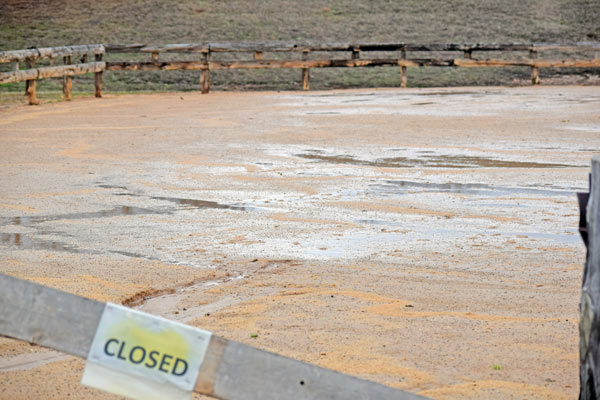
Think about where water will drain
Drainage problems are a common complaint about existing arenas, and this is often because it was not considered during the planning process. Before installing a new arena, it is important to determine where water is already moving naturally. In general, flatter areas tend to collect water, while hills and slopes will give water somewhere to go. In a perfect world, the intended location for your arena is an area from which water readily drains away. If this is not possible, many drainage issues can be addressed through a combination of excavation work and the selection of an appropriate base material.
How Do I Choose the Right Base?
Choosing the right base layer is critical to a successful arena, as it provides a solid and consistent foundation for the footing. There are many different options for base material, and the right one for your specific situation will depend on the placement and drainage needs of your site as well as your budget.
Many arenas are successfully built upon a simple compacted base. This economical option requires stone dust, screenings or road base, which is wetted down and compacted with a vibrating roller. Other arenas are built on a free-draining base, which combines rock with a geotextile to promote drainage.
To further enhance drainage, some sites may benefit from technology such as OTTO Sport Arena Base Mats, which are placed on top of a free-draining base. Not only do the OTTO Sport Mats create a stable, all-weather base for the arena, they absorb shock and promote arena longevity. Premier Equestrian is the exclusive North American distributor for OTTO Sport.
An additional option is known as the Arion Ebb and Flow system. In this base style, the arena is built over a waterproof membrane and pipe array from which water can readily flow in and out. The system is electronically controlled to maintain a consistent level of moisture, wetting the footing from below and eliminating the need for sprinklers. After heavy rain, excess water is collected in the pan and released, rather than puddling on the arena surface.
What Type of Footing Should I USe?
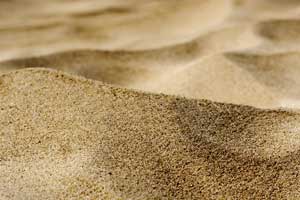
Arena Sand
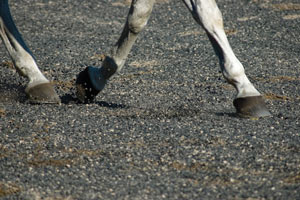
Rubber Arena Footing
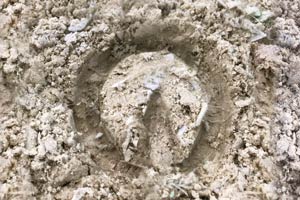
Geotextile Arena Footing
While all of the preceding considerations for arena design are critical to ultimate success, when it comes to the horse, perhaps no other component is more important than the selection of the arena footing itself.
“Arena footing is probably the most important part of any equestrian facility, because it will have the greatest impact on the horse’s health over the long term,” explains Neihart.
There are many footing options, ranging from simple sand to synthetic fabrics to waxed footing. In making your selection, there are two important considerations: the availability of water, and the type of sand available in your area. The correct sand is critical and can be difficult to source. There are over 10,000 types of sand used in the U.S. alone for different purposes, so be careful in your choices.
“If you go down to the local rock quarry and say, ‘I’m building a horse arena,’ I guarantee the guy will say, ‘yeah, I have horse arena sand, it’s over there’,” says Neihart. “That guy doesn’t know anything about horses, just that somebody bought that sand for a horse arena. So be careful.”
This is perhaps one of the most expensive mistakes equestrians make when building their arenas. Instead, consult with the experts at Premier Equestrian to determine the best type of arena sand for your facility and for the type of footing you want. The quality of the sand you choose will ultimately play a critical role in both the performance of your arena and dust levels.
From there, you can select from various horse arena footing amendments including rubber, textiles or other well established additives. Amendments are carefully chosen to complement your available sand, giving cushion to harder varieties and assisting with moisture retention and stability for others.
Final Thoughts
While the elements in designing a great riding surface are no secret, if you are not in the business of building riding areas it is easy to make costly mistakes. Underfoot is an arena building and design guide published by the United States Dressage Federation and edited by the experts at Premier Equestrian, and it can help you to navigate the process without falling into common traps. And as always, the team at Premier Equestrian is happy to offer a free consultation, whether you are rehabbing an existing arena or building from scratch.
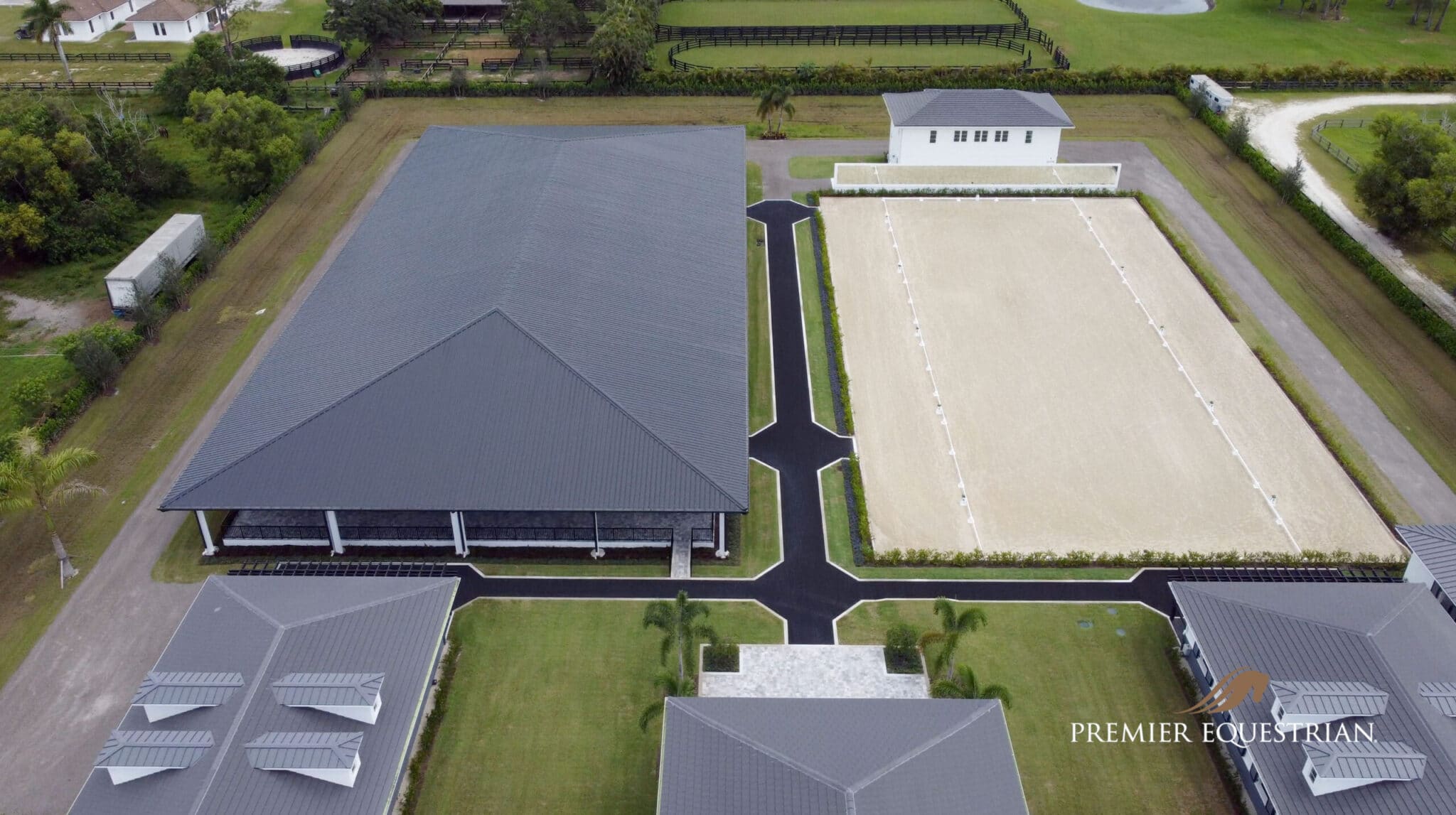
Indoor vs Outdoor arena footing – Is there a difference?
Related Resources:
ALL CONTENT COPYRIGHT 2020 PREMIER EQUESTRIAN

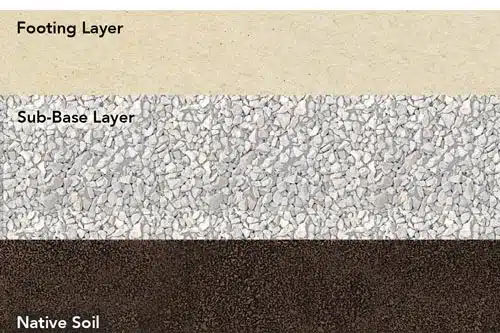
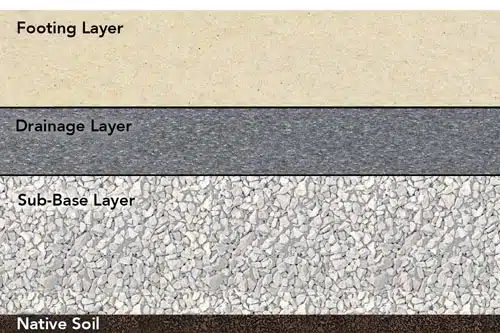
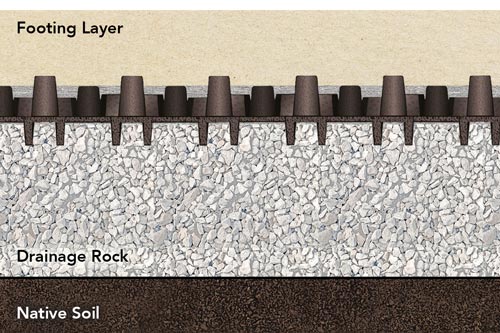
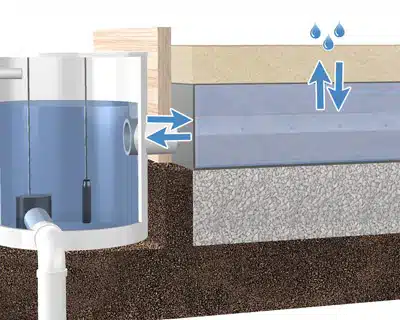
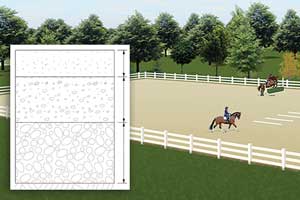
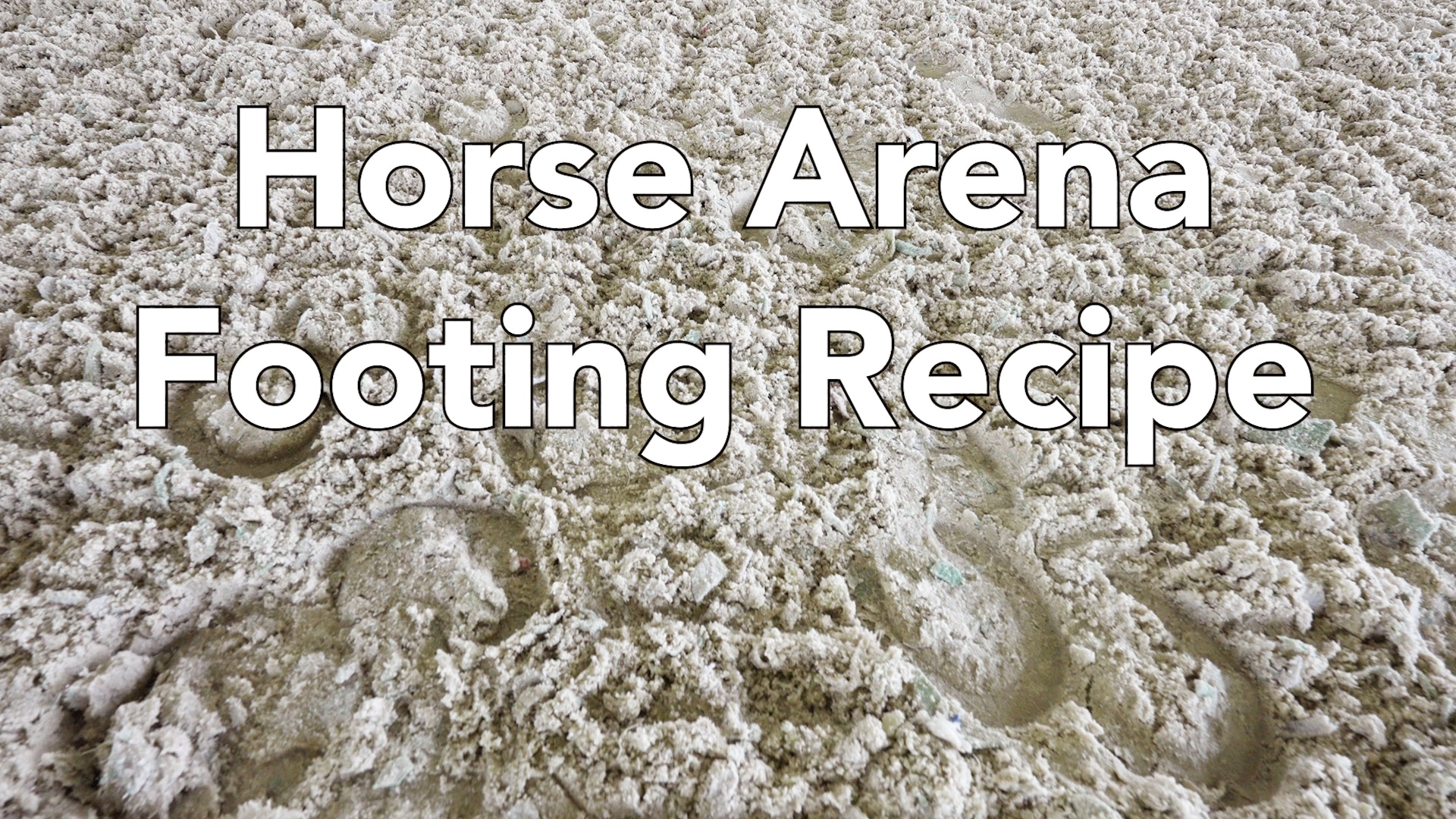


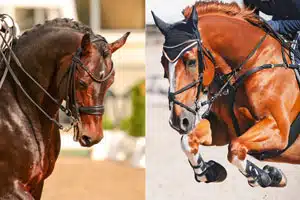
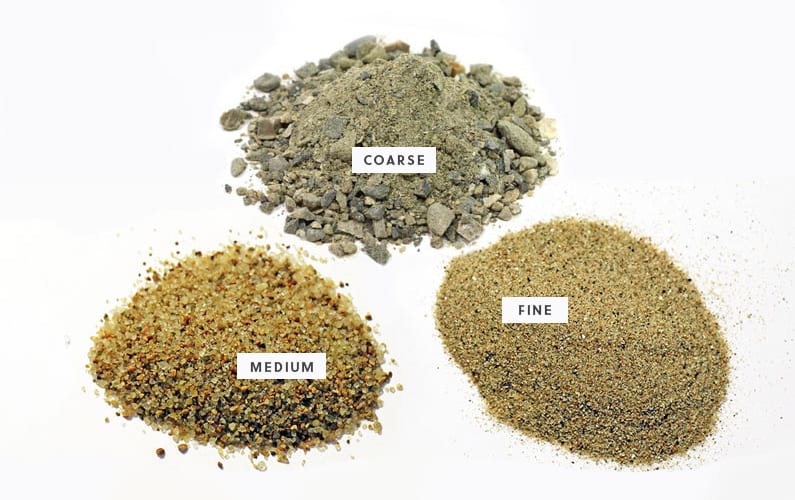
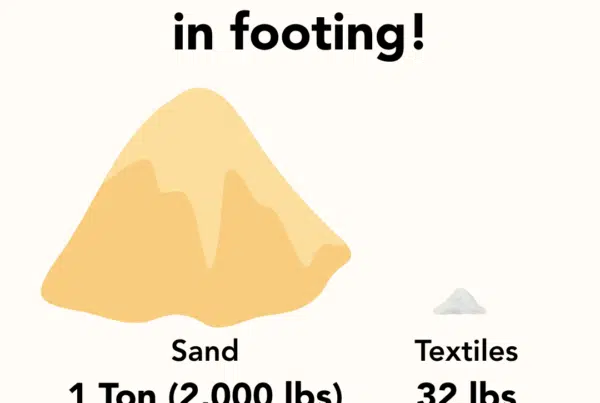

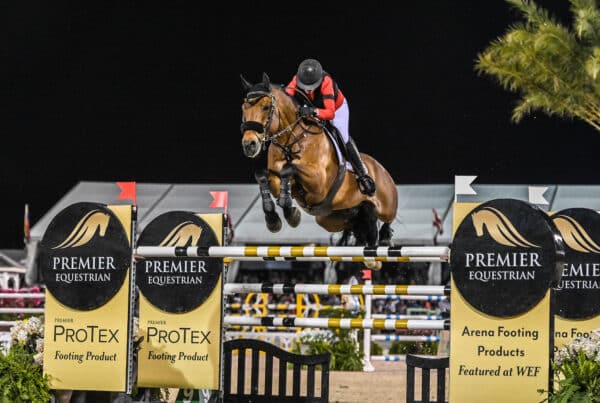

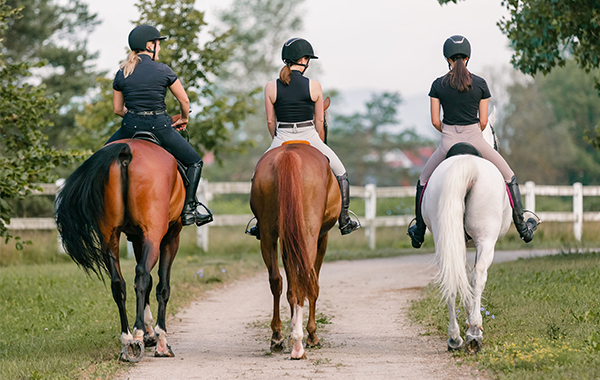
It’s good to know that a jumping arena would need around 20,00 square feet to accommodate a full course, which is why it’s important to consider the size and desired use when building one. My wealthy uncle, who owns a 50-hectare land, is thinking of building a horse arena on it. I’ll share this information with him the next time I see him, so he knows what to consider when he actually hires a horse arena construction service. Thanks for this!